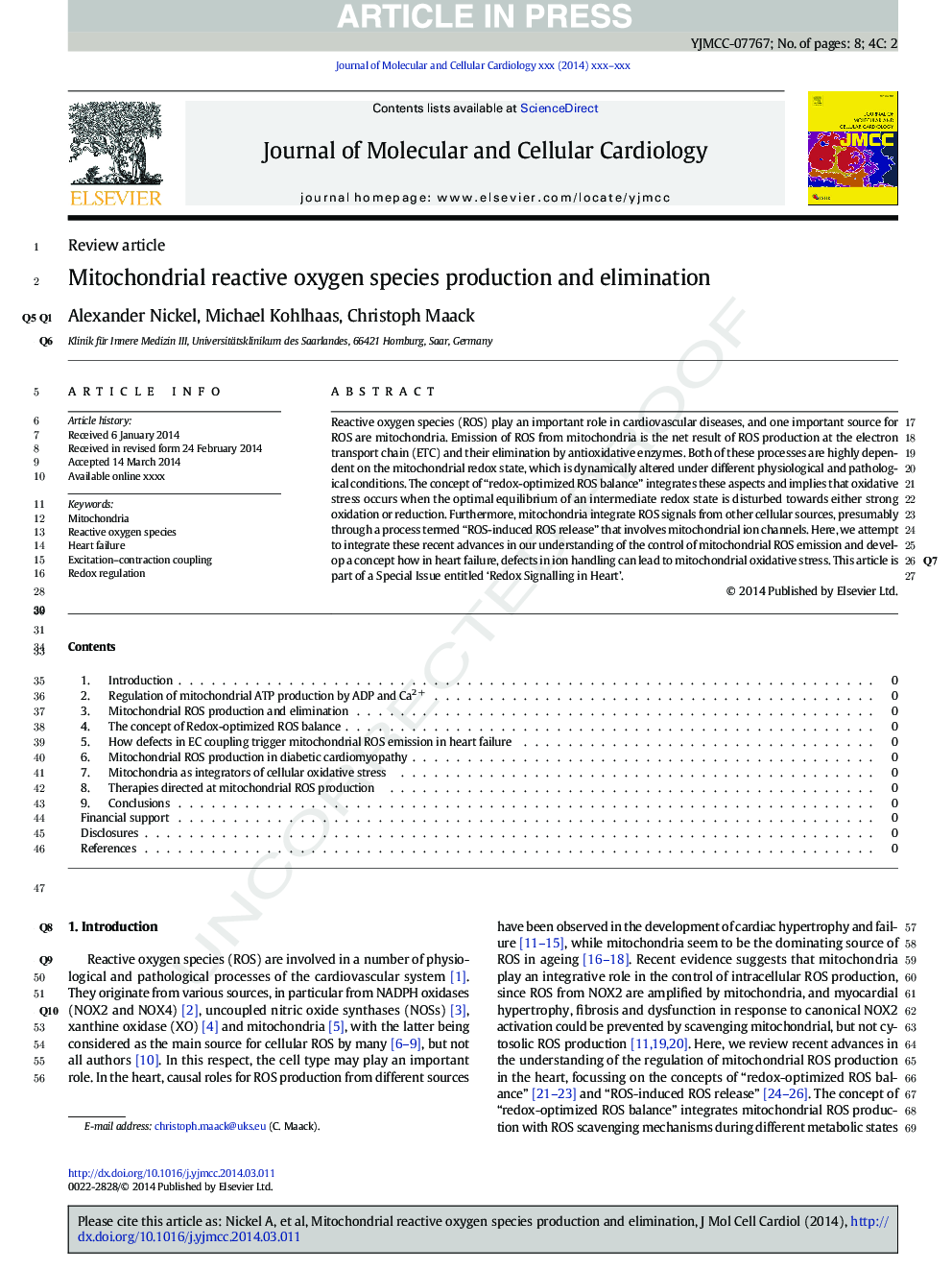| Article ID | Journal | Published Year | Pages | File Type |
|---|---|---|---|---|
| 8474785 | Journal of Molecular and Cellular Cardiology | 2014 | 8 Pages |
Abstract
Reactive oxygen species (ROS) play an important role in cardiovascular diseases, and one important source for ROS are mitochondria. Emission of ROS from mitochondria is the net result of ROS production at the electron transport chain (ETC) and their elimination by antioxidative enzymes. Both of these processes are highly dependent on the mitochondrial redox state, which is dynamically altered under different physiological and pathological conditions. The concept of “redox-optimized ROS balance” integrates these aspects and implies that oxidative stress occurs when the optimal equilibrium of an intermediate redox state is disturbed towards either strong oxidation or reduction. Furthermore, mitochondria integrate ROS signals from other cellular sources, presumably through a process termed “ROS-induced ROS release” that involves mitochondrial ion channels. Here, we attempt to integrate these recent advances in our understanding of the control of mitochondrial ROS emission and develop a concept of how in heart failure, defects in ion handling can lead to mitochondrial oxidative stress. This article is part of a Special Issue entitled “Redox Signalling in the Cardiovascular System”.
Keywords
Related Topics
Life Sciences
Biochemistry, Genetics and Molecular Biology
Cell Biology
Authors
Alexander Nickel, Michael Kohlhaas, Christoph Maack,
